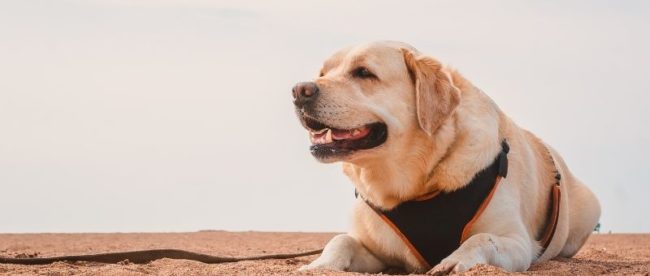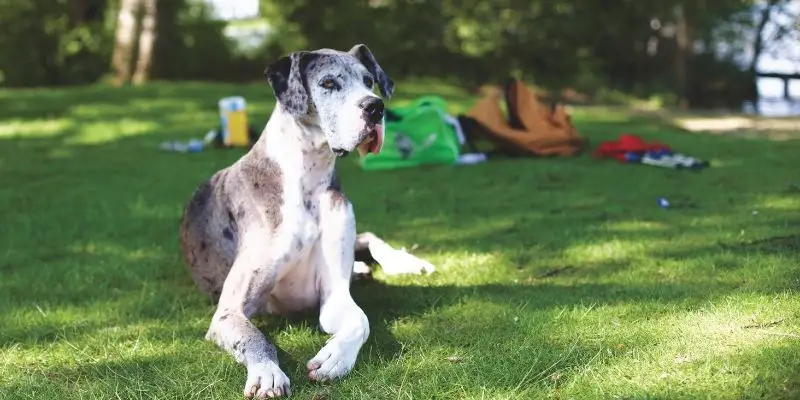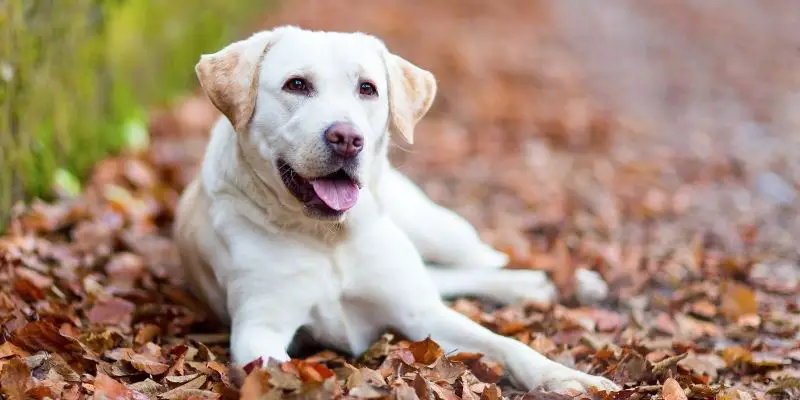13 Best Dog Breeds for Hot Weather: Some Like It Hot

Dogs can be a pain to keep indoors during the summertime. Many people don’t know what their best option is when it comes to finding an outdoor activity for them. The best part about this article? It will show you 13 of the best dog breeds that have evolved over time to withstand hotter climates!
Do you have a question about a specific dog breed for hot weather? Then use the table of contents below to jump to the most relevant section. And you can always go back by clicking on the black arrow in the right bottom corner of the page. Also, please note that some of the links in this article may be affiliate links. For more details, check the Disclosure section at the bottom of the page.
Here's what we'll cover:
German Short-haired Pointer
They are excellent swimmers and have a short, flat, water-resistant coat that helps them maintain their temperature and resists dirt. These pointers are excellent athletes (they enjoy jumping) with big, sturdy nails to keep trucking through dirt and rocks. These athletic pups are hyper and energetic, but they need space to run and play. They live a long life—often up to the mid-teens—and can do just about everything. This is a dog that can track, hunt, point, pull sleds, detect bombs, and of course, go on walks or runs with you on a hot summer day.
American Water Spaniel
Another ideal breed for warmer climes and will enjoy the hot months is this pup, a medium-sized dog with a robust build and physical and mental stimulation. The American Water Spaniel is an intelligent, active water dog with a distinctive wavy coat that protects them from the elements while running through the woods. The American Water Spaniel has longer, curly ears similar to a Cocker Spaniel.
Great Dane

The Danes are a breed of enormous dog that was developed in Germany. They are part of the Mastiff family and aren’t from Denmark; they were created in Germany. Danes rank as one of the tallest dogs, but they have among the shortest life expectancies.
They adore relaxing on the sofa, in bed, or even on your lap and lean on you, but they especially enjoy being warm. When it’s 90 degrees outside, they’ll lay down where the sun is basking, and we have to ask them to come in and cool off.
Airedale Terrier
Airedales are a versatile hunting breed that can be used both on land and in the water. Still, they are also lively and goofy, with enough stamina to spend the summer exploring. Airedales’ coats make them ideal for hot climates since they require little maintenance.
Border collies are one of the brightest dogs, and they’re highly intelligent. They can get bored quickly, just like humans. Make sure to keep Airedales occupied with toys, exercise, and hiking through the woods, your yard, or a park while you’re out in the sun. Keep in mind that dogs don’t wear shoes, so hot surfaces like rocks or plastic playground equipment could be incredibly harmful to their paws.
Labrador Retriever

Labs, on the other hand, are a unique combination of tenacity and enjoyment that enjoy both cold and scorching climates. If you think your Lab enjoys playing in the yard or rolling around in the snow, simply bring him near a pond or ocean.
Webbed paws, as well as a water-resistant, somewhat oily coat and a rudder-like tail that aids in propulsion, make them ideal swimmers. They can also launch from a pier without hesitation.
American Foxhound
The coat of the Foxhound is composed of short hair, which helps it stay cooler in hot weather. Don’t be fooled by its adorable appearance and pleasant disposition; this breed may be stubborn. Therefore it must be trained, but it gets along well with families and other pets.
Chihuahua

The Chihuahua is a tiny dog breed that thrives in warm weather areas and is adaptable. The Chihuahua’s thin covering and tiny stature don’t offer much warmth. Therefore this breed prefers warmer temperatures. Because they originated in Mexico’s hot desert, the Chihuahua is not unfamiliar with warm weather.
Australian Cattle Dog
The dog from Down Under is an energetic, hardworking breed with a desire to work in the hot sun or warm weather. Australian cattle dogs have a short double coat. It works well to keep them cool and protect them when night temperatures drop. The breed is also known as a “blue heeler” and is a highly energetic dog breed that thrives in any weather, making them ideal for hot climates.
Ibizan Hound
The Ibizan hound is a beautiful and athletic dog breed developed many hundreds of years ago on the Balearic Islands, near Spain’s coast. They most likely descended from Phoenician merchants who brought Egyptian hounds to the islands. As sighthounds, they were bred to run in hot pursuit of prey under the blazing sun.
Afghan Hound
Afghan hounds enjoy the heat because of their long, flowing locks. This breed’s native country of Afghanistan is known for hot weather and cold at night. These dogs are well-acquainted with temperature changes. The main disadvantage is that you must be prepared to groom the coat once a week to keep it free of knots and debris.
Chinese Crested
The majority of Chinese crested dogs are hairless. They most likely evolved in Asia from imported hairless African canines used to extreme heat. Sunburn on the exposed skin of a Chinese crested or any other hairless, short-haired, or sparsely-haired dog may occur rapidly. Use a sunscreen or take other safeguarding measures to protect your dog from the sun’s harmful effects.
Greyhounds
Like the smaller Italian greyhound, this big-sized sprinter is one of the best large breed dogs for hot climates. Greyhounds have a short, thin coat and a lean body structure. In hot weather, they may regulate their temperature more quickly than in cold weather due to these characteristics. In addition, the greyhound only requires a few brief bursts of high-speed activity followed by a stroll or two.
Xoloitzcuintli
The Xoloitzcuintli is a hairless dog native to Mexico, also known as the Mexican Hairless Dog or Mexican Hairless Dog. This breed is well-equipped for hot weather; it’s been exposed to high temperatures and direct sunlight before. There are both hairless and coated types, with a coated Xolo being no exception to tolerating hot weather well.
Credits: thanks for the cover photo to Canva.

Disclosure: At pawtypooch.com we only mention the products that we’ve researched and considered worthy. But it’s important to note that we are a participant of several affiliate programs, including VigLink, ShareASale, Skimlinks, and Amazon Services LLC Associates Program, an affiliate advertising program designed to provide a mean for us to earn fees by linking to Amazon.com and affiliated sites. As an Amazon Associate pawtypooch.com earns from qualifying purchases. Also, please note that pawtypooch.com does not intend to provide veterinary advice. All published articles are meant for informational purposes only. And this information should not be substituted for professional veterinary consultation.

